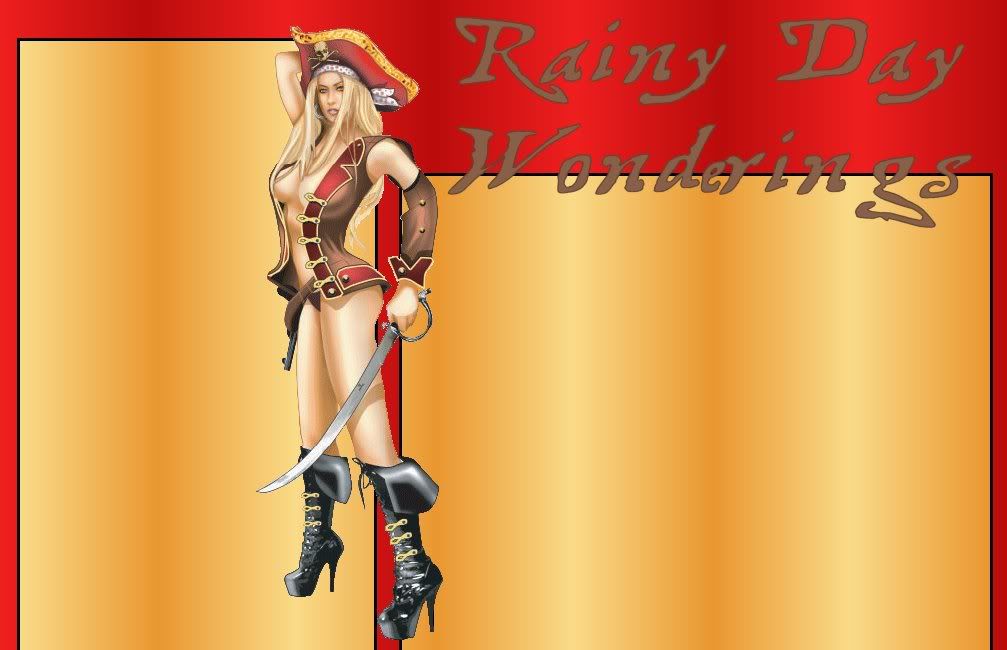

I awoke this morning to the sound of thunder. I looked outside my bedroom window and it was raining.I went outside to the backyard and danced naked in the rain. The warm rain felt so good on my skin. My dogs were looking at me like I was crazy.
Now, it is really hot and muggy. I feel like I am going to melt. Rainman and I will be spending the evening in Coronado.There is nothing better than a midnight swim in the ocean when it is this hot.
On Saturday Rainman and Joe are spending the night with their friends.That means I will have the house all to myself for the entire night.I have a date with C. and he is making a seafood delight for dinner.King Crab, jumbo shrimp and lobster....yummy! Then we are off to The Comedy Store to see Claude Sires and Adam Eppenstein.
Since I am in charge of dessert, perhaps I will use my body as his personal serving platter. For three days C has been calling me and leaving me messages saying that he wants to make me his personal lollipop tomorrow night. The man certainly knows how to make me hot! ;o)
Please drive safely this weekend, take care everyone!
Labels: misc.
N Posted by Rain at 8/31/2007 09:49:00 PM


Some people believe there is a skull hidden within the painting. Before the location is revealed, have a look and see if you can see it (once it is pointed out, it is hard not to see it). Look to the left of the forget-me-nots on the right of the painting, a nose and two hollow eyes can just be made out. This may well be just the light and shade in the foliage or the skull may be a reminder of death and hint at what is about to happen.
Millais's model was a young woman aged 19 years called Elizabeth Siddall. She was discovered by his friend, Walter Deverell, working with a needle in a milliner's, and would later become the wife of one of Millais's friends, Dante Gabriel Rossetti in 1860. This was the only time Elizabeth posed for Millais. She was described as "tall and slender, with red, coppery hair and bright consumptive complexion."
She was Rossetti's muse, inspiring his artistic production. He painted her as an enigmatic woman who never looks straight at the spectator unlike the directness of her own self-portrait. They married in 1860, but; "The marriage turned into a catastrophe. Siddall's melancholia and illness prevailed.She was anxious, restless, in part because of Rossetti's infidelities, heavily addicted to laudanum, to release her from the pain of both disease and distress." (Over Her Dead Body: Death, Femininity and the Aesthetic by Elisabeth Bronfen, 1992, p.176)
In 1862 she died from an overdose of laudanum; "perhaps accidental or perhaps a suicide; in either case the overdose may have been related to post-natal depression after the birth of her stillborn child the previous year." (The Art of the Pre-Raphaelites by Elizabeth Prettejohn, Tate, London, 2000, page 74).
Suggested Reading:
Over her Dead Body: Death, Femininity and the Aesthetic by Elisabeth Bronfen 1992
The Art of the Pre-Raphaelites by Elizabeth Prettejohn, Tate, London, 2000
Sources:
*******
Have a wonderful day everyone! Take care.
Labels: Art, Arts and Madness, Hamelt
N Posted by Rain at 8/29/2007 11:09:00 AM

 One for the guys...
One for the guys...
Thank you for the images Benita!
Have a great week everyone!
Labels: Hunky Mondays
N Posted by Rain at 8/27/2007 12:06:00 AM
